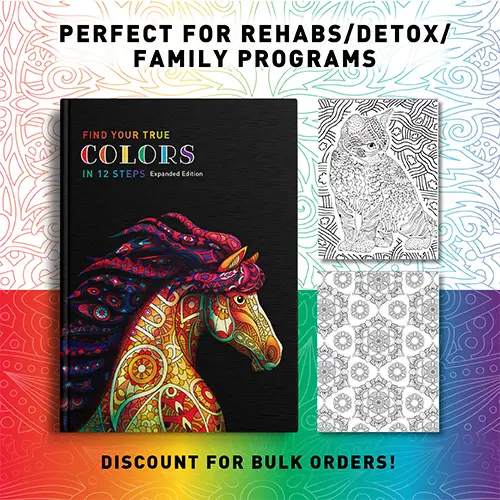How to Treat Chronic Pain Without Medication
Treating chronic pain without relying on medication has become an increasingly important factor in the field of healthcare. While medications can provide immediate relief to chronic pain, they aren’t a long-term solution, often coming with a long list of side effects and the potential for dependency. With an alternative or holistic approach, pain relief strategies offer a comprehensive and often sustainable way to manage chronic pain and treat the root cause of the pain instead of just relieving the symptoms.
Chronic Pain Can Be Treated Without Medication
Pain relief doesn’t have a one-size-fits-all solution. What may relieve pain for one person may not work for another. Co-founder of Midwest Anesthesia and Pain Specialists (MAPS), Thomas Pontinen, MD, LCP-C has shared some of the most effective ways to manage chronic pain without relying on medication, highlighting the importance of a well-rounded and personalized approach to pain care.
Physical Therapy
For certain injuries causing pain, a physical therapist can design an individualized exercise and mobility program to improve flexibility, strength, and overall function, addressing underlying causes that may be contributing to chronic pain. They may also use techniques such as massage and joint mobilization depending on the specific needs of the individual and the injury. Physical therapy is often an integral part to a comprehensive pain management treatment program because it can help your body achieve better functionality. A physical therapist will do more than help you recover, however. Through the physical therapy process, you will learn how to keep your muscles and joints strong, resistant to injury, and functional for the daily life you want to live.
Chiropractic Care
Chiropractors treat chronic pain by using manual manipulation techniques, focusing on the spine to improve joint alignment and alleviate pain. Through assessments, spinal adjustments, and complementary interventions like soft tissue techniques and exercise recommendations, chiropractors aim to enhance overall musculoskeletal function to reduce chronic pain. They will typically provide guidance on posture, lifestyle changes, and nutritional considerations. While chiropractic care on its own can offer relief for some, it is often used in combination with other therapies to ensure a well-rounded approach to chronic pain management.
Massage Therapy
Massage therapy is a widely recognized and effective approach for relieving chronic pain. Through skilled manipulation of soft tissues, including muscles and connective tissues, massage therapy aims to reduce muscle tension, improve circulation, and enhance overall flexibility. The hands-on techniques employed by professional massage therapists can help break down adhesions, reduce inflammation, and promote relaxation, decreasing pain levels. Additionally, the release of endorphins during massage contributes to a sense of well-being and can act as a natural pain reliever. While individual responses may vary, many people experience improved comfort and function, making massage therapy a valuable and non-invasive option for those seeking relief from chronic pain. However, massage therapy may not be right for certain injuries so it’s important to consult with a medical professional first.
Acupuncture
A keystone in traditional Chinese medicine, acupuncture involves the insertion of tiny needles into specific points of the body to alleviate pain. The technique involves inserting thin needles into specific points on the body, stimulating nerve endings, muscles, and connective tissues. This process is believed to trigger the release of endorphins, the body’s natural painkillers, and influence the nervous system’s response to pain. Acupuncture may also enhance blood flow to affected areas and reduce inflammation. Some people find relief from chronic pain through regular acupuncture sessions, making it a valuable holistic approach to pain relief.
Heat and Cold Therapy
Applying heat or cold to affected areas can provide relief for various injuries causing pain. Heat can help relax muscles, while cold can reduce inflammation. You may need to experiment with both to see which works best for you. If homemade heat or ice packs don’t seem to help, pain specialist clinics offer heat and cold therapy treatments that can penetrate the affected area deeper providing more effective relief. Heat therapy and cold therapy are rapidly becoming more popular in pain treatment settings, and more research is being performed on a daily basis to strengthen our understanding of how these kinds of therapies can be beneficial.
Nutrition and Lifestyle Changes For Chronic Pain
Adopting a healthy, balanced diet and making positive lifestyle changes, such as quitting smoking, managing stress, and maintaining a healthy weight, can contribute to overall well-being and may help alleviate chronic pain in the long run. For example, those experiencing chronic pain due to inflammation may find relief in adopting an anti-inflammatory diet, by eating more turmeric, olive oil, leafy greens, and fatty fish while avoiding processed foods, refined carbs, and excess sugar. This is only one example of how important our everyday habits are when it comes to not only preventing chronic pain but also addressing it head-on. Certain chronic pain conditions, such as neuropathy, can be caused by nutrient deficiencies. This is one reason why a pain management treatment approach must also investigate your general health and lifestyle and determine if something as simple as a dietary change could reduce pain in the long run.
More Articles To Read About Pain Relief
Back Pain What’s Better Hot Or Cold
How To Manage Mood Swings In Menopause
What is PEMF Therapy And How Does It Help





















